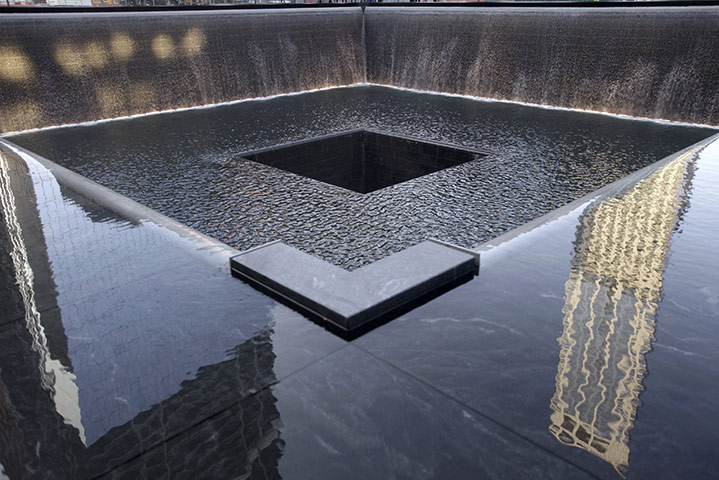For the 1,120 families of 9/11 victims whose remains have yet to be identified, there's a new glimmer of hope for closure.
City forensic scientists plan to soon add another tool to their laboratory -- a cutting-edge technique that will allow the city Medical Examiner's Office to use DNA taken from bone fragments to determine a person's eye and skin color.
"It'll give us some physical descriptions of some individuals whose remains were recovered," said Mark Desire, assistant director of the medical examiner's Department of Forensic Biology. "We can narrow down the search."
As it stands now, an unidentified DNA sample without a match can only tell scientists whether the deceased was a man or a woman.
With 8,655 partial remains from the World Trade Center still unidentified, that isn't very useful.
But by determining if a DNA sample belongs to someone with light or dark skin or brown or blue eyes, scientists could get several steps closer to linking those remains to actual victims. Scientists believe that using such new data, coupled with yet-to-be-made advancements -- DNA markers for hair color, for example -- could eventually lead to positive identifications.
John Cartier, who lost his brother James on 9/11, hopes one day he will be able to claim James' remains.
"This is a step in the right direction," Cartier said. "I see it as them continuing to find ways to help."
The new technique has been unfolding for more than three years in the lab of Elisa Wurmbach, a scientist with the ME's Department of Forensic Biology. She studied ways to identify markers in DNA samples by conducting tests on more than 700 volunteers.
Wurmbach was able to determine eye color within a 3 percent margin of error and skin color within a 1 percent margin.
Those margins are "very low," she said.
Now she's working on perfecting a testing method in which identifying the DNA markers won't fail.
Before the city can use the technique, its scientists must validate it.
"It has to go through very rigorous evaluations," said Zoran Budimlija, a city researcher. "It's not going to be used in the WTC case -- not yet."
The new technique could be applied broadly, and even be used to solve some of the 60,000 missing persons cases that crop up in the U.S. every year.
In the aftermath of 9/11, Only 1,633 of the 2,753 victims have been identified. As DNA testing is exhausted, the number of new identifications has dwindled in the last six years. Only one new identification has been made so far this year.
The continuing effort to ID victims has cost more than $50 million. The examiner's forensics lab, which is the largest government lab of its kind in the nation, receives funding from the city, state and federal governments.
Matching up
21,817 Remains recovered
13,162 Remains matched to the dead
2,753 Victims killed at Ground Zero
1,633 Number of those victims identified from remains
Monday 1 October 2012
http://www.ufanyc.org/cms/contents/view/14130
City forensic scientists plan to soon add another tool to their laboratory -- a cutting-edge technique that will allow the city Medical Examiner's Office to use DNA taken from bone fragments to determine a person's eye and skin color.
"It'll give us some physical descriptions of some individuals whose remains were recovered," said Mark Desire, assistant director of the medical examiner's Department of Forensic Biology. "We can narrow down the search."
As it stands now, an unidentified DNA sample without a match can only tell scientists whether the deceased was a man or a woman.
With 8,655 partial remains from the World Trade Center still unidentified, that isn't very useful.
But by determining if a DNA sample belongs to someone with light or dark skin or brown or blue eyes, scientists could get several steps closer to linking those remains to actual victims. Scientists believe that using such new data, coupled with yet-to-be-made advancements -- DNA markers for hair color, for example -- could eventually lead to positive identifications.
John Cartier, who lost his brother James on 9/11, hopes one day he will be able to claim James' remains.
"This is a step in the right direction," Cartier said. "I see it as them continuing to find ways to help."
The new technique has been unfolding for more than three years in the lab of Elisa Wurmbach, a scientist with the ME's Department of Forensic Biology. She studied ways to identify markers in DNA samples by conducting tests on more than 700 volunteers.
Wurmbach was able to determine eye color within a 3 percent margin of error and skin color within a 1 percent margin.
Those margins are "very low," she said.
Now she's working on perfecting a testing method in which identifying the DNA markers won't fail.
Before the city can use the technique, its scientists must validate it.
"It has to go through very rigorous evaluations," said Zoran Budimlija, a city researcher. "It's not going to be used in the WTC case -- not yet."
The new technique could be applied broadly, and even be used to solve some of the 60,000 missing persons cases that crop up in the U.S. every year.
In the aftermath of 9/11, Only 1,633 of the 2,753 victims have been identified. As DNA testing is exhausted, the number of new identifications has dwindled in the last six years. Only one new identification has been made so far this year.
The continuing effort to ID victims has cost more than $50 million. The examiner's forensics lab, which is the largest government lab of its kind in the nation, receives funding from the city, state and federal governments.
Matching up
21,817 Remains recovered
13,162 Remains matched to the dead
2,753 Victims killed at Ground Zero
1,633 Number of those victims identified from remains
Monday 1 October 2012
http://www.ufanyc.org/cms/contents/view/14130



